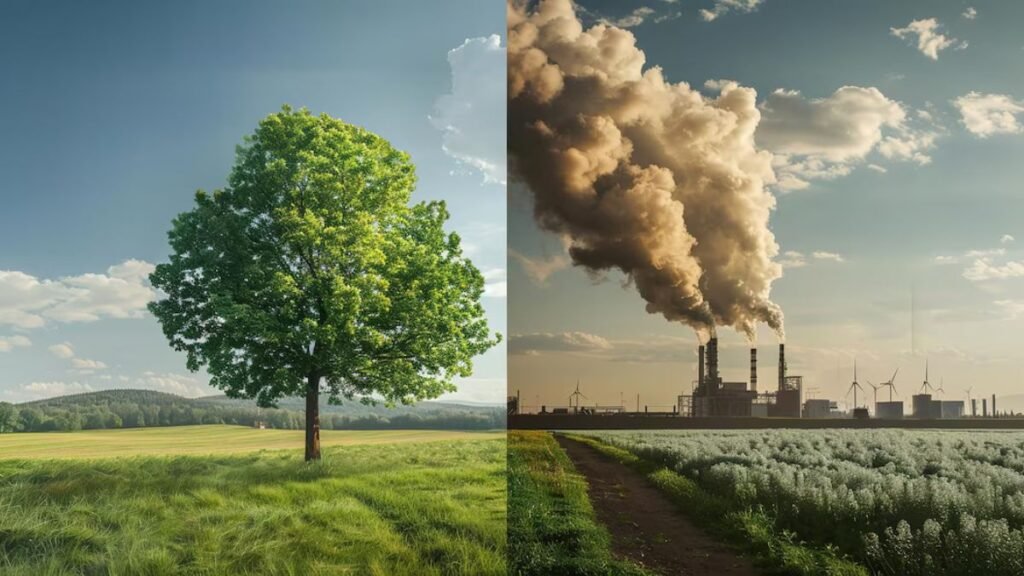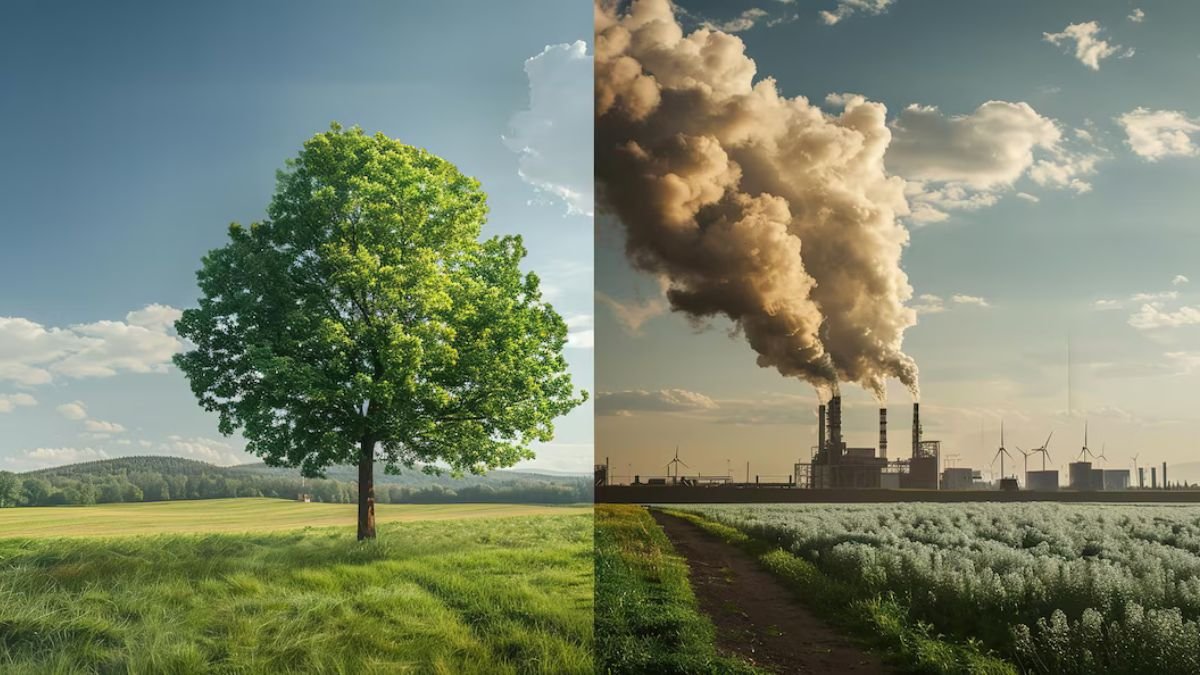Contents
- 1 Table of Contents
- 1.1 Introduction
- 1.2 The Geography and Background of Dorsten and Fresno
- 1.3 Air Pollution: Key Pollutants in Dorsten and Fresno
- 1.4 Causes of Pollution in Dorsten vs. Fresno
- 1.5 Health Impacts of Pollution
- 1.6 Governmental Policies and Regulations
- 1.7 Comparison Chart: Dorsten vs. Fresno Pollution
- 1.8 Conclusion
- 1.9 FAQs
- 1.9.1 1. Why is Fresno’s pollution worse than Dorsten’s?
- 1.9.2 2. What are the health impacts of long-term exposure to pollution in these cities?
- 1.9.3 3. How do government policies address pollution in both regions?
- 1.9.4 4. Can Fresno’s pollution levels be reduced?
- 1.9.5 5. What role does geography play in air pollution?
Table of Contents
Introduction
Dorsten vs Fresno Pollution Comparison Chart Environmental pollution is a significant global concern, with different regions facing varying degrees of challenges based on factors such as industrial activity, transportation, population density, and local regulations. Dorsten, a small town in Germany, and Fresno, a city in California, United States, serve as excellent examples of two regions with contrasting industrial backgrounds and environmental conditions.
In this article, we’ll explore the air pollution levels, causes of pollution, health impacts, and governmental policies related to pollution in Dorsten and Fresno. To further illustrate the differences, a comparative chart will summarize key metrics regarding pollution in both locations.
The Geography and Background of Dorsten and Fresno
Dorsten
Dorsten is a town in North Rhine-Westphalia, Germany, with a population of around 75,000 people. Situated near the Ruhr region, historically known for coal mining and heavy industry, Dorsten has managed to transition away from heavy industry toward cleaner sectors. The area benefits from Germany’s rigorous environmental policies and the European Union’s stringent pollution controls. Dorsten’s pollution levels reflect this shift, with a cleaner environment than during its industrial peak.
Fresno
Fresno, located in California’s San Joaquin Valley, is home to more than 540,000 people. Agriculture dominates the local economy, but the region is also affected by pollution from transportation (especially freight transport), industrial activities, and surrounding metropolitan areas. The San Joaquin Valley’s geography, which traps air pollutants, exacerbates pollution, making Fresno one of the most polluted cities in the United States.
Air Pollution: Key Pollutants in Dorsten and Fresno
Air pollution includes several harmful pollutants, primarily particulate matter (PM), nitrogen dioxide (NO₂), sulfur dioxide (SO₂), and carbon monoxide (CO). Let’s break down the key pollutants in each region.
Key Pollutants in Dorsten
- Particulate Matter (PM2.5 and PM10): Particulate matter is primarily produced by vehicular traffic, heating, and some minor industrial activities. In Dorsten, PM levels are relatively low compared to industrial hubs, owing to the decline of heavy industry and the adoption of cleaner technologies.
- Nitrogen Dioxide (NO₂): Emissions from vehicles contribute significantly to NO₂ levels in Dorsten, although they are kept in check by strict European Union regulations.
- Ozone (O₃): Ground-level ozone forms when NO₂ and volatile organic compounds (VOCs) react in sunlight. Due to Dorsten’s lower levels of precursor pollutants, ozone pollution is less of a concern compared to larger urban areas.
Key Pollutants in Fresno
- Particulate Matter (PM2.5 and PM10): Fresno struggles with high PM concentrations due to agricultural activities (e.g., tilling and crop burning), industrial emissions, and dust from unpaved roads. The region’s geographic conditions further trap these pollutants, causing poor air quality, particularly in winter.
- Nitrogen Dioxide (NO₂): Vehicle emissions, particularly from diesel trucks that frequent the area due to its agricultural importance, lead to high NO₂ levels in Fresno. The city’s NO₂ levels often surpass U.S. standards for safe air quality.
- Ozone (O₃): Fresno ranks among the worst U.S. cities for ozone pollution, largely because of the valley’s sun-rich environment, which promotes the formation of ozone when NO₂ and VOCs interact.
Causes of Pollution in Dorsten vs. Fresno
Causes of Pollution in Dorsten
- Transportation: The main contributor to air pollution in Dorsten is vehicular traffic. While Germany has some of the most stringent emission standards, older diesel vehicles and busy roadways still generate considerable pollution.
- Household Heating: In colder months, the burning of fossil fuels for household heating, especially in older homes, contributes to particulate matter and NO₂ pollution.
- Agriculture: Dorsten has some agricultural areas that contribute minor amounts of ammonia, which can combine with other pollutants to form particulate matter.
- Reduced Industrial Activity: Historically, Dorsten was affected by emissions from coal mines and steel plants in the nearby Ruhr area, but industrial closures have significantly reduced pollution levels over the past few decades.
Causes of Pollution in Fresno
- Agriculture: Fresno’s economy is deeply tied to agriculture, and activities such as soil tilling, pesticide application, and burning of crop residues contribute significantly to particulate matter in the air. Ammonia emissions from livestock also play a role.
- Transportation: Fresno is located along major freight routes, with large numbers of diesel trucks passing through daily. These trucks release high levels of NO₂ and particulate matter. Additionally, personal vehicles and public transport contribute to overall emissions.
- Industrial Activities: While Fresno’s industries are not as heavy as those in larger cities, food processing and manufacturing facilities emit pollutants that contribute to local air quality issues.
- Geography: The San Joaquin Valley is surrounded by mountains, which trap air pollutants and prevent dispersion. This geography creates a “bowl effect,” causing pollutants to accumulate, especially in the winter months when temperature inversions occur.
Health Impacts of Pollution

Health Impacts in Dorsten
While pollution levels in Dorsten are relatively low, the health impacts of air pollution cannot be completely dismissed:
- Respiratory Issues: Exposure to nitrogen dioxide and particulate matter can lead to respiratory problems, such as asthma and bronchitis, particularly among children and the elderly.
- Cardiovascular Problems: Studies have shown that long-term exposure to low levels of air pollution can still result in cardiovascular diseases, although the risks are significantly lower than in more polluted areas.
- Cancer Risk: Historically, areas near the Ruhr, including Dorsten, experienced higher cancer rates due to industrial emissions. However, with cleaner air today, the cancer risk associated with air pollution is much lower.
Health Impacts in Fresno
Fresno, due to its high pollution levels, experiences more severe health consequences:
- Asthma and Respiratory Diseases: Fresno has some of the highest asthma rates in the United States. The frequent exposure to high levels of ozone, particulate matter, and NO₂ exacerbates these conditions, especially in children.
- Premature Death: Studies in the San Joaquin Valley have linked high levels of particulate matter and ozone to premature deaths due to cardiovascular and respiratory diseases. Fresno ranks among the top cities in the U.S. for premature mortality related to air pollution.
- Low Birth Weight and Infant Mortality: Pregnant women exposed to high pollution levels in Fresno are more likely to give birth to underweight babies, and air pollution has been linked to higher rates of infant mortality.
Governmental Policies and Regulations
Pollution Control in Dorsten
Germany has implemented rigorous environmental policies through both national and European Union regulations. Key initiatives include:
- Low-Emission Zones: Many German cities, including regions near Dorsten, have established low-emission zones, where vehicles must meet strict emissions standards to enter. This reduces the impact of transportation on air quality.
- Renewable Energy Transition: Germany is a leader in renewable energy, and the transition from coal and natural gas to wind, solar, and other clean energy sources is reducing emissions from power generation.
- EU Clean Air Policies: The European Union’s Ambient Air Quality Directive sets strict limits on pollutants such as NO₂ and PM, helping keep Dorsten’s air cleaner than in previous decades.
Pollution Control in Fresno
California has some of the toughest air quality regulations in the United States, but Fresno’s pollution levels remain high due to unique challenges. Some key policies include:
- California Air Resources Board (CARB) Regulations: CARB enforces stringent vehicle emission standards, including requirements for electric vehicles and trucks. However, older diesel trucks still contribute heavily to Fresno’s pollution.
- Agricultural Regulations: California has implemented rules to reduce emissions from agricultural burning, and farmers are encouraged to adopt cleaner methods. Nonetheless, the scale of agriculture in the region makes this an ongoing challenge.
- Renewable Energy Initiatives: Like the rest of California, Fresno benefits from policies aimed at increasing the share of renewable energy in electricity generation. However, transportation remains the largest polluter in the region.
Comparison Chart: Dorsten vs. Fresno Pollution
| Metric | Dorsten | Fresno |
|---|---|---|
| Particulate Matter (PM2.5) | Moderate (~12 μg/m³) | High (~20-30 μg/m³) |
| Ozone Pollution (O₃) | Low | Very High |
| Nitrogen Dioxide (NO₂) | Low to Moderate | High |
| Industrial Emissions | Low | Moderate |
| Main Sources of Pollution | Transportation, heating | Agriculture, transportation |
| Health Impact (Respiratory) | Low to moderate risk | High risk |
| Government Policies | Stringent EU regulations | CARB regulations, local laws |
| Geography’s Role | Minimal impact | Traps pollutants (bowl effect) |
Conclusion
Dorsten vs Fresno Pollution Comparison Chart The comparison between Dorsten and Fresno highlights the importance of geography, industrial activity, and governmental policies in shaping air pollution levels. While Dorsten benefits from stringent European Union regulations and a transition away from heavy industry, Fresno struggles with agricultural pollution, transportation emissions, and its unique geographic challenges.
While Fresno’s pollution levels are significantly higher, it is also important to note that efforts are being made at both local and state levels to address these challenges. However, long-term solutions will require even more aggressive action, particularly in transitioning away from diesel-heavy transportation and adopting cleaner agricultural practices.
FAQs
1. Why is Fresno’s pollution worse than Dorsten’s?
Fresno’s pollution is worse due to its geography, heavy reliance on agriculture, and high levels of vehicular emissions, especially from diesel trucks. The San Joaquin Valley’s geography traps pollutants, making it harder for air to circulate and disperse.
2. What are the health impacts of long-term exposure to pollution in these cities?
In Dorsten, long-term exposure to moderate levels of air pollution may contribute to respiratory and cardiovascular problems, though the risk is relatively low. In Fresno, high pollution levels lead to severe respiratory issues like asthma, cardiovascular diseases, premature death, and complications in pregnancy, such as low birth weight.
3. How do government policies address pollution in both regions?
Germany, including Dorsten, has stringent environmental policies and regulations that control emissions from transportation, industry, and heating. California, home to Fresno, also has strict regulations, especially for vehicle emissions, but agricultural and transportation challenges still contribute to high pollution levels in the area.
4. Can Fresno’s pollution levels be reduced?
Yes, but it will require a combination of stricter regulations, cleaner technologies, and significant changes in both transportation and agricultural practices. Transitioning to electric vehicles, adopting cleaner farming methods, and improving public transportation can help reduce pollution.
5. What role does geography play in air pollution?
Geography plays a significant role in air pollution levels. Fresno is located in a valley that traps pollutants, creating a “bowl effect” that prevents air circulation. In contrast, Dorsten’s geography does not trap pollutants to the same extent, allowing for better air quality.





